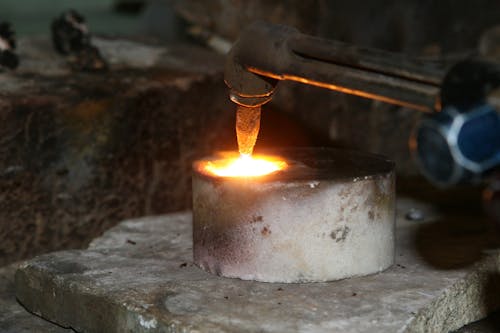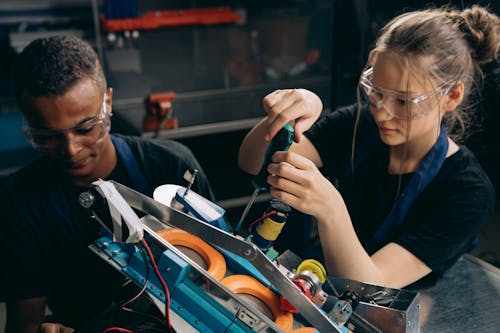Die-casting is a complex process that comes with the issue of cost. Does die-casting cost a lot? Individuals as well as companies that are curious about using this manufacturing technology regularly ask this question. In this article, we’ll look at the several aspects that affect die-casting costs and provide you with an in-depth explanation.
The Cost of Die Casting: What Makes It So Expensive?

Production of aluminum die casting
Aluminum die-casting installation can be costly, depending on the design of the product, because it requires a large number of workers.
Secondary operations
Sometimes additional processes like deburring, machining, sanding, or hand finishing are necessary to produce the desired part finish.
Finishing
Even after secondary operations, the need for any additional finishing, such as painting, plating, anodizing, or engraving, raises the price.
The expense of labor is the primary factor in the high cost of aluminum die casting. Aluminum die casting is considered one of the most effective methods of changing raw materials into an elegant, finished product shape. This enables the designer to include features in the part that might not be required and increase the cost or make the procedure difficult.
The Hidden Costs of Die Casting
Die casting may have greater initial costs compared to alternative manufacturing methods such as injection molding or stamping. However, die casting can be a more efficient solution for some applications since it can frequently create a lot of parts quicker and with less waste.
Die-casting costs will vary depending on the intricacy of the component, the volume of the manufacturing run, and the kind of material used. In conclusion, die casting can be a financially sensible option for high-volume manufacturing runs of complex products.
Why is Die Casting More Expensive Than Other Manufacturing Processes?
We have to compare die casting with different methods of production in order to decide if it is an expensive method or not. The advantages and disadvantages of die casting in comparison to other manufacturing methods are as follows:
Die Casting vs. Injection Molding
Injection molding is a method of producing parts by pouring molten plastic into a mold cavity. Injection molding is suitable for making huge volumes of parts with simple shapes. But it can’t be used to make pieces with intricate features or forms. On the other hand, die casting works well for creating pieces with intricate features and shapes.
Machining Vs Die Casting
A solid block of material is removed during the manufacturing process of machining in order to produce a product. Machining is appropriate for creating items of low to medium complexity. It is ineffective for creating internal cavities or very complicated pieces, though. On the other hand, die casting is perfect for creating pieces with interior cavities or a high level of intricacy.
Is Die Casting Worth the Cost?
Die casting is often used when you need to produce numerous metal pieces quickly and cheaply. The original tooling cost is the biggest cost, and as you produce more parts, the cost per unit drops dramatically.

In a single day of work, a die-casting process can produce dozens or even hundreds of parts. Due to this, turnaround times are quite favorable, and prices are reasonable.
When compared to a die-casting operation, CNC machining is far more expensive and takes much longer to produce very high volumes.
The Pros and Cons of Die Casting
Pros
Die casting has a lot of advantages, including speed. Die casting can readily and quickly make parts with little waste. Because of this, it is a desirable alternative for projects requiring large manufacturing because the cost per unit can be maintained low.
Furthermore, die casting enables incredibly fine surface finishing, making it ideal for delicate components and products with complex geometries.
- Compared to machining or injection molding, die casting is a quicker and more effective method of manufacture.
- Die casting generates products that are more resilient and robust than other procedures.
- Die casting has a lower fault rate than other methods.
- Die casting is a flexible method that can be used to make a wide range of components and goods.
Cons
Die casting’s main drawback is that not all metals or alloys can be used with it.
Additionally, some designs might be too complicated to cast using this technique. Therefore, tooling costs might increase if additional steps are required to produce the necessary shape or design.
- The costly nature of the process, the requirement for highly skilled labor, and the potential for product flaws are some of the disadvantages of die casting.
- Die casting is also a lengthy process, as it can take many hours to finish a single casting.
- Finally, die casting can result in hazardous waste that needs to be appropriately disposed of.
The Factors That Affect the Cost of Die Casting
Die-casting method is not universal in nature. Die-casting costs vary depending on a number of factors. The following are some die-casting cost-determining factors:
Material Cost
One of the most important aspects of die casting is the cost of the materials. The cost of the raw materials needed in the manufacturing procedure may differ greatly based on the type of metal used. Aluminum is the most often used material in die casting as it is flexible, robust, and cheap.
Tooling Cost
Another important aspect of die casting is the price of the tools. Die-casting molds are expensive to produce, and the price is based on how intricate the design is. The cost of tooling increases with design complexity.
Production Volume
In die casting, production volume is also an important consideration. As production volume increases, the cost per part drops. Die casting is therefore more economical for high-volume manufacture.
Part Complexity
The cost of die-casting is also influenced by the component’s intricacy. The cost of the tooling rises when a part has complicated interior chambers or complex shapes.
How to Reduce the Cost of Die Casting
A complete Design for Manufacturing (DFM) inspection should be done before choosing aluminum die casting. It is best to choose Castingod as soon as possible if you want to cut costs. As a result, the price of the parts will be much reduced.
You can cut the cost of the part through further savings in addition to these expense reductions. These can include reduced material use, improved tolerances, and superior uniformity from component to component.
Die Casting Alternatives
Casting can be replaced by a variety of metal-forming processes. Each has distinct benefits and drawbacks. Casting alternatives that are more widely used include:
• Machining • Forging • Stamping • Rolling • Extruding • Sintering
When Is Die Casting the Best Manufacturing Process?
Die casting creates components with excellent dimensional precision and durability. Over time, the parts retain their dimensional correctness even when subjected to challenging circumstances. Die casting is therefore used to create intricate and internal machine parts that must meet the highest standards of accuracy and precision.
How to Choose the Right Die-Casting Supplier
It’s important to do research before selecting the most suitable supplier of die-cast products because it’s not a decision to be made carelessly.
When selecting a die caster, several factors must be taken into account, particularly if you’re looking for one that works with aluminum or zinc alloy.
You will get reasonable costs from a reputable die caster like Castingod.
Why Castingod?
Castingod has more than 20 years of experience in the aluminum die-casting industry in China. They possess the knowledge and abilities necessary to approach every project with assurance. Whether you’re seeking high-quality architectural details, durable medical equipment, or automobile components. They will gladly change or modify our procedures to meet your demands.








